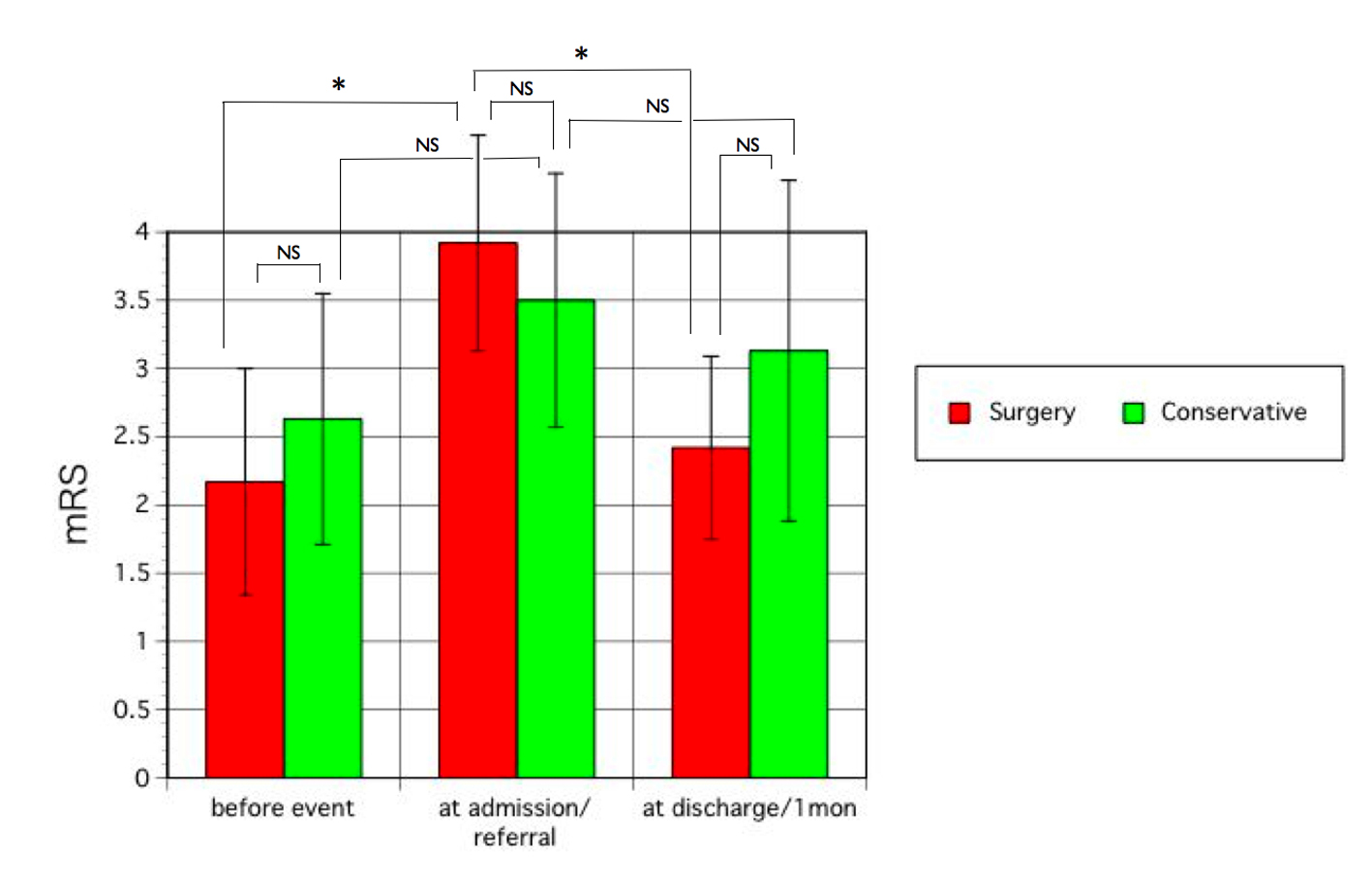
Figure 1. Neurological status as evaluated by mRS before the event (CSDH), on admission or referral to hospital, and at discharge after surgery or 1 month after treatment in the surgery group and conservative group, respectively. Statistical analysis was performed using the Wilcoxon/Kruskal-Wallis test and t-test. Error bars show standard deviation. NS, not significant. *P < 0.01.